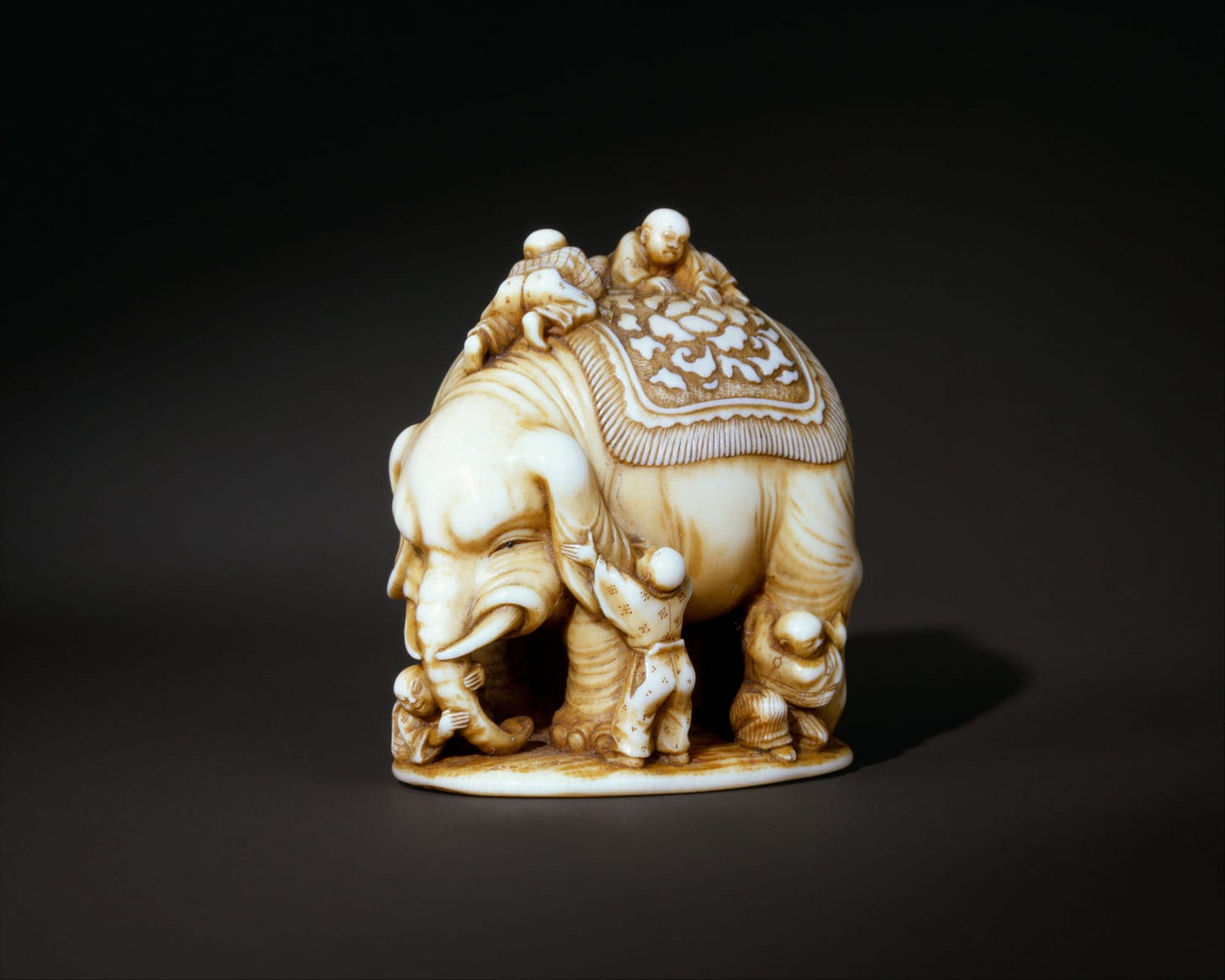Most of you will be familiar with the parable of the blind men and the elephant.

The parable originated in the Indian subcontinent, from where it has been widely diffused. One of the earliest versions is contained in a Buddhist text, which is dated to around 500 BCE, i.e., during the lifetime of the Buddha. The story forms part of Jain, Hindu and Buddhist texts of the 1st millennium CE. In the 2nd millennium, it also became part of Sufi and Baháʼí faith lore. Eventually it became well known in the West, where the American poet John Godfrey Saxe (1816-1887) created this version:
It was six men of Indostan To learning much inclined, Who went to see the Elephant (Though all of them were blind), That each by observation Might satisfy his mind. The First approached the Elephant, And happening to fall Against his broad and sturdy side, At once began to bawl: “God bless me! but the Elephant Is very like a WALL!” The Second, feeling of the tusk, Cried, “Ho, what have we here, So very round and smooth and sharp? To me ’tis mighty clear This wonder of an Elephant Is very like a SPEAR!” The Third approached the animal, And happening to take The squirming trunk within his hands, Thus boldly up and spake: “I see,” quoth he, “the Elephant Is very like a SNAKE!” The Fourth reached out an eager hand, And felt about the knee “What most this wondrous beast is like Is mighty plain,” quoth he: “’Tis clear enough the Elephant Is very like a TREE!” The Fifth, who chanced to touch the ear, Said: “E’en the blindest man Can tell what this resembles most; Deny the fact who can, This marvel of an Elephant Is very like a FAN!” The Sixth no sooner had begun About the beast to grope, Than seizing on the swinging tail That fell within his scope, “I see,” quoth he, “the Elephant Is very like a ROPE!” And so these men of Indostan Disputed loud and long, Each in his own opinion Exceeding stiff and strong, Though each was partly in the right, And all were in the wrong!
The obvious moral of the story is that humans have the annoying habit of claiming absolute truth based on their limited and perforce subjective experience while ignoring the (usually just as limited and subjective) experiences of others.

In this context, it is worth sharing what Sri Aurobindo wrote about Truth in his epic poem Savitri.
To Sri Aurobindo, as to the Rishis and mystics to whom we owe the Rig Veda and the Upanishads, Truth is suprarational and supramental. What the Rishis spoke of as the “truth consciousness” or as Truth’s “own home,” Sri Aurobindo called Supermind.
In the human mind, Truth splinters into innumerable conflicting “truths.” And not only in the human mind. As we have seen in this post, the splintering already occurs far above the human mind, during the involutionary descent from the Supermind to the highest level of mental consciousness, which Sri Aurobindo called Overmind.
In the following passage “she” is the Truth, and what the passage describes is what happens to her when, by way of intuition or inspiration, she enters a human mind.
Into thought’s narrow limits she has come; Her greatness she has suffered to be pressed Into the little cabin of the Idea, The closed room of a lonely thinker’s grasp: She has lowered her heights to the stature of our souls And dazzled our lids with her celestial gaze. Thus each is satisfied with his high gain And thinks himself beyond mortality blest, A king of truth upon his separate throne. To her possessor in the field of Time A single splendour caught from her glory seems The one true light, her beauty’s glowing whole. But thought nor word can seize eternal Truth: The whole world lives in a lonely ray of her sun. In our thinking’s close and narrow lamp-lit house The vanity of our shut mortal mind Dreams that the chains of thought have made her ours; But only we play with our own brilliant bonds; Tying her down, it is ourselves we tie. In our hypnosis by one luminous point We see not what small figure of her we hold; We feel not her inspiring boundlessness, We share not her immortal liberty. Thus is it even with the seer and sage; For still the human limits the divine: Out of our thoughts we must leap up to sight, Breathe her divine illimitable air, Her simple vast supremacy confess, Dare to surrender to her absolute. Then the Unmanifest reflects his form In the still mind as in a living glass; The timeless Ray descends into our hearts And we are rapt into eternity. For Truth is wider, greater than her forms. A thousand icons they have made of her And find her in the idols they adore; But she remains herself and infinite.
But let me also put in a good word for reason’s “inconstancy, its divisibility against itself”:
“The reason,” Sri Aurobindo wrote, “cannot grasp all truth in its embrace because truth is too infinite for it; but still it does grasp the something of it which we immediately need, and its insufficiency does not detract from the value of its work, but is rather the measure of its value…. Its inconstancy, its divisibility against itself, its power of sustaining opposite views are the whole secret of its value.” For the longer passage containing these sentences see this post.



Zettai mujunteki jikodoitsu.
Thank you. The events of the last few weeks reminded me of that obscure force you both saw with such clarity; which is and it is not, and must be opposed.
“Every society known to history is a global society, every culture a cosmological order.” (Marshall Sahlins, Goodbye to Tristes Tropes, p.489)